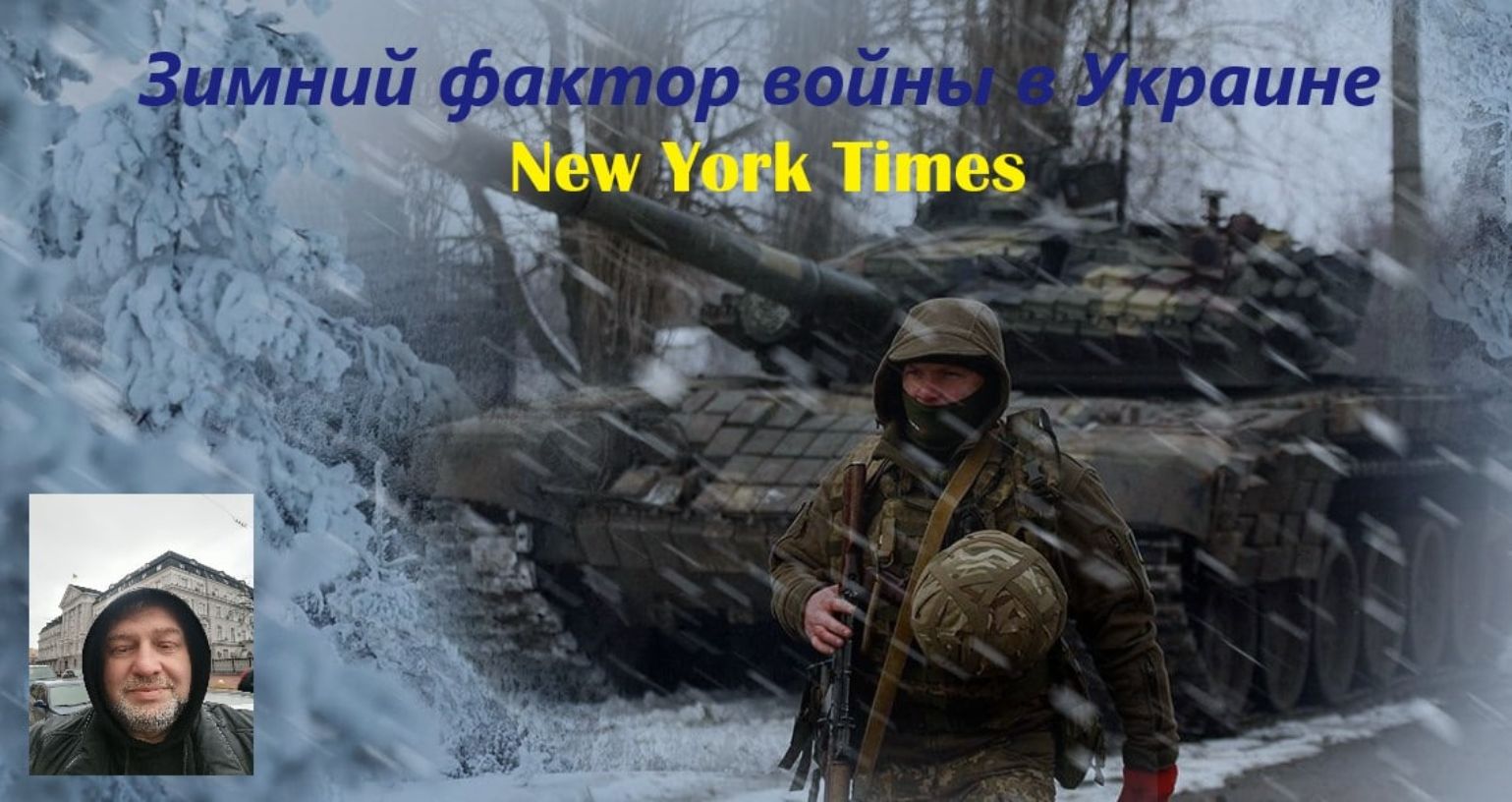
New rubric – our note. We analyze programmatic publications in the foreign press.
1. Winter in Ukraine will slow down the offensive on both sides. The winter break can last up to six months. And this, of course, would be very desirable in Russia. (In our opinion, this is precisely why both sides, hoping for surprise, are secretly preparing for offensive operations).
2. During the likely winter break, both sides will retrain their troops and prepare for a new offensive in February. Biden officials say it is important to use the winter slowdown to restore Ukrainian defensive and offensive weapons. Due to equipment problems and an influx of newly drafted soldiers who will need to be trained, Russia is also likely looking to use the winter break to recover. (One does not interfere with the other. We are talking about the restoration of weapons with a simultaneous large offensive by the Russian Federation, and a local counteroffensive of Ukraine).
3. Rain, snow and soft ground at the end of November will slow down the movement of both sides. Then, when the temperature drops and the ground freezes, it will be easier for tanks and trucks to move around. However, the possibility of heavy snowfalls and frost could make any new offensive difficult for the poorly equipped Russian army. Therefore, new large-scale offensives from Russia in Ukraine are not expected. (In our opinion, by reducing the front in the south, the Russian Federation is preparing for a large-scale offensive along the remaining line, using fully deployed elite formations, aviation and the Strategic Missile Forces. The Russian Federation, of course, has worse winter equipment for the army than Norway or Finland, but much better (experience and traditions deployment of the Armed Forces in the Arctic, Siberia and the Far East) than the Armed Forces of Ukraine and most NATO members).
4. For Ukraine, winter conditions will complicate the logistics of conventional operations to liberate territories, and the lack of vegetation and other shelters will make an offensive with limited armored vehicles risky. And for Russia, with demoralized forces and ill-prepared positions, the winter is likely to witness further morale decline and significant casualties from open wounds. (Surovikin has been demonstrating the preparation of defensive positions in depth since August. Most likely, to be calm behind the lines and limit the possibilities for a Ukrainian counteroffensive in certain areas during the large winter offensive of the Russian Federation).
5. IN GENERAL THE WAR IS PASSING INTO A NEW PHASE. Russia is likely to intensify its attacks on infrastructure to intimidate Ukrainians. In return, Ukraine could launch a covert campaign designed to show that it can strike back even on Russian soil. The Ukrainians are going to intensify systemic sabotage and sabotage attacks on Russian positions. These are targeted killings and sabotage on Russian-controlled territories inside Ukraine. (The possibilities for a total guerrilla war in the occupied territories for Kyiv are very limited and ineffective, as are sabotage actions in the Russian Federation. Not only will they not affect the change in the Kremlin’s military plans, but they will also be an excuse for the maximum destruction of Ukraine’s civilian infrastructure).
CONCLUSION: The authors of the New York Times are deliberately downplaying the threats and risks of a broad winter offensive by the RF Armed Forces in Ukraine. The goal is obvious: appeasing the American political establishment and motivating the military-political leadership of Ukraine.
Andrey Mishin
political scientist of the international affairs,
conflictologist,
Special for IISWU
15.11.2022
